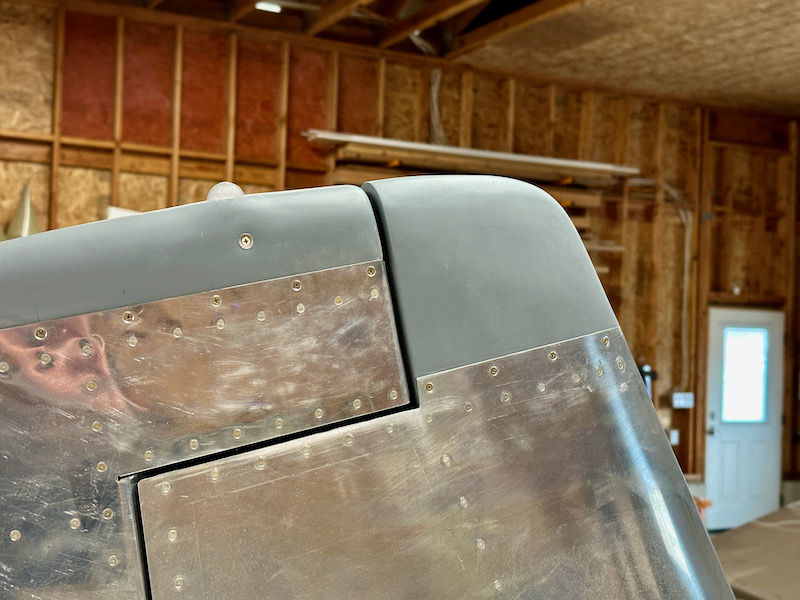With the rudder finished and installed on the airplane, I'm now able to fit the vertical stabilizer fairing. Here it is clecoed to the skin:
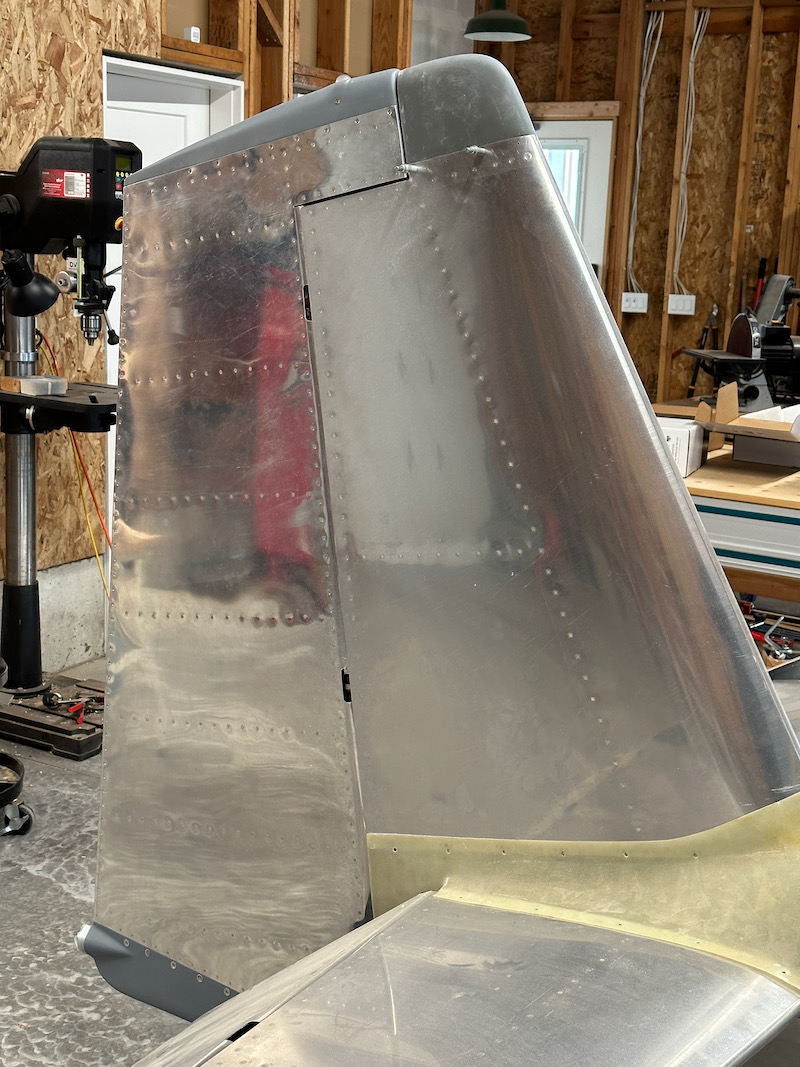
Unfortunately the shapes of the vertical stabilizer and rudder fairings don't match at all. Given that Van's can produce metal parts with holes that align perfectly, I'm not sure why their fiberglass parts are so troublesome – you'd think they'd be able to turn out properly-sized fairings in some kind of CNC-produced mold. But anyway, this mismatch needs to get fixed:
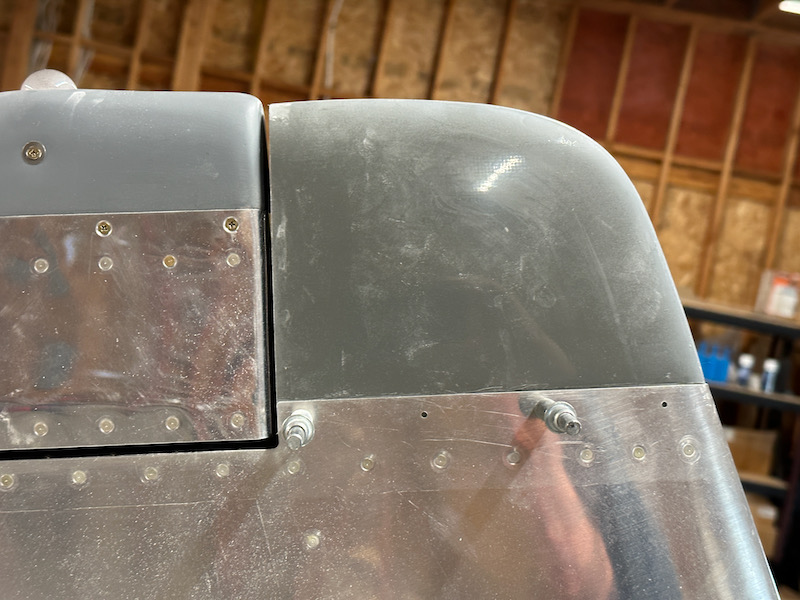
The back face of the fairing also needs to be closed up with something. I decided to use the method currently given in the RV-14 plans, and laid up three plies of glass over a flat piece of aluminum (visible at left). Oh fiberglass mess, how I have not missed you.
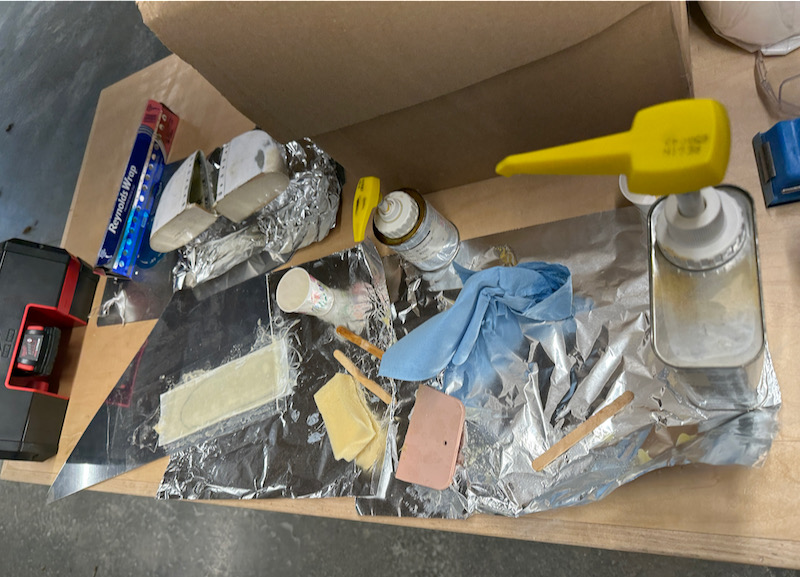
While that was curing, I cut some popsicle sticks to the correct size and super-glued them inside the fairing, flush with the edge. These will keep the fairing from collapsing when it's removed from the plane:
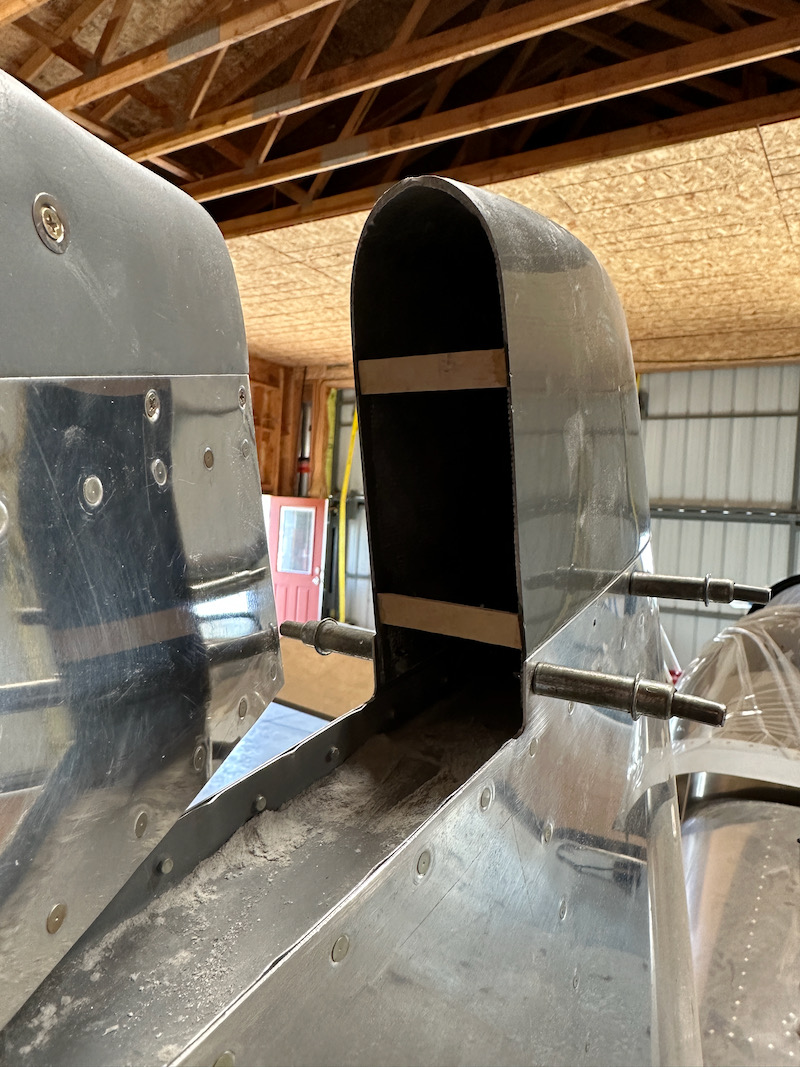
I ended up with a thin, flat sheet of stiff plastic, which I marked and trimmed slightly oversize:
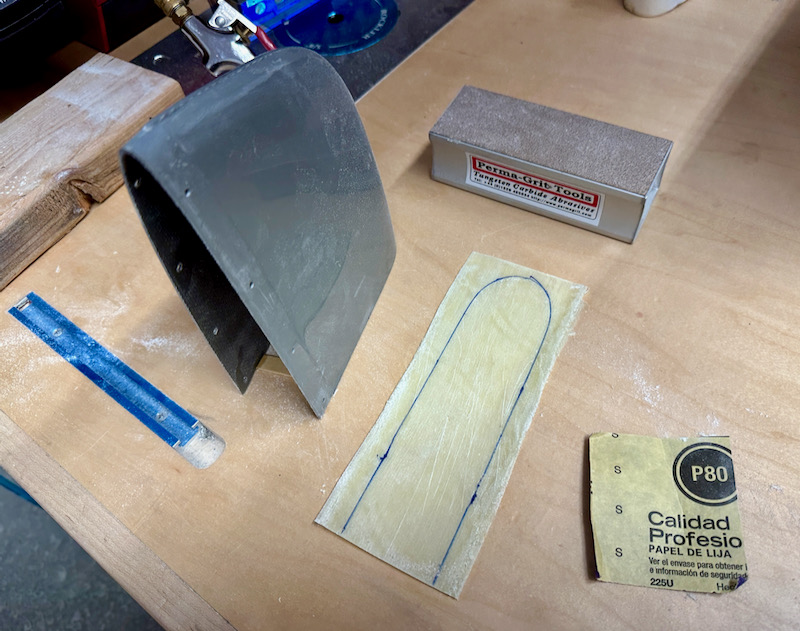
Then I bonded it to the fairing with a flox bead, and an additional glass layer on the inside. The RV-14 plans tell you to do this step on the airplane, which seems like it would be messy; the popsicle sticks allow you to do this on the workbench where you can control the mess easier. I left it to cure overnight under an incandescent lamp due to the arrival of winter weather here in the northwest:
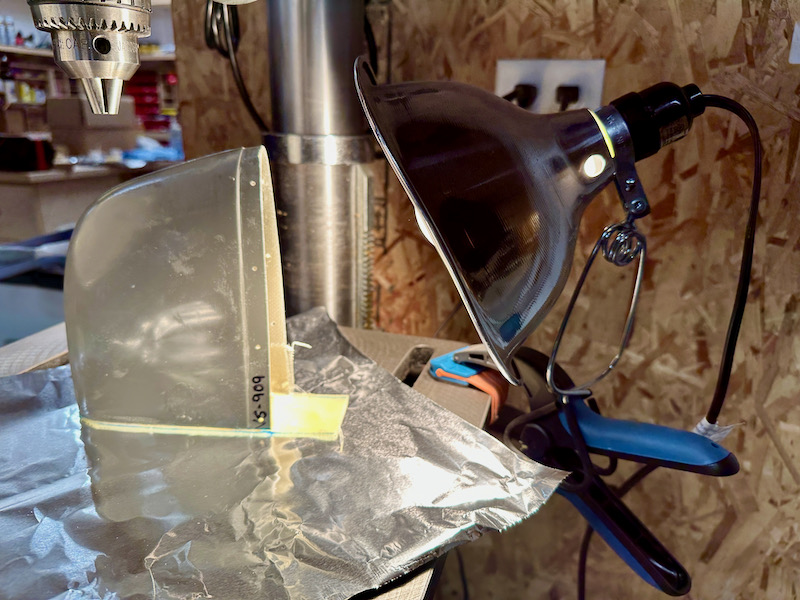
After curing I sanded the edges flush, and the result is pretty good. The popsicle sticks are now sandwiched between glass layers, which will prevent them from soaking up water and swelling:
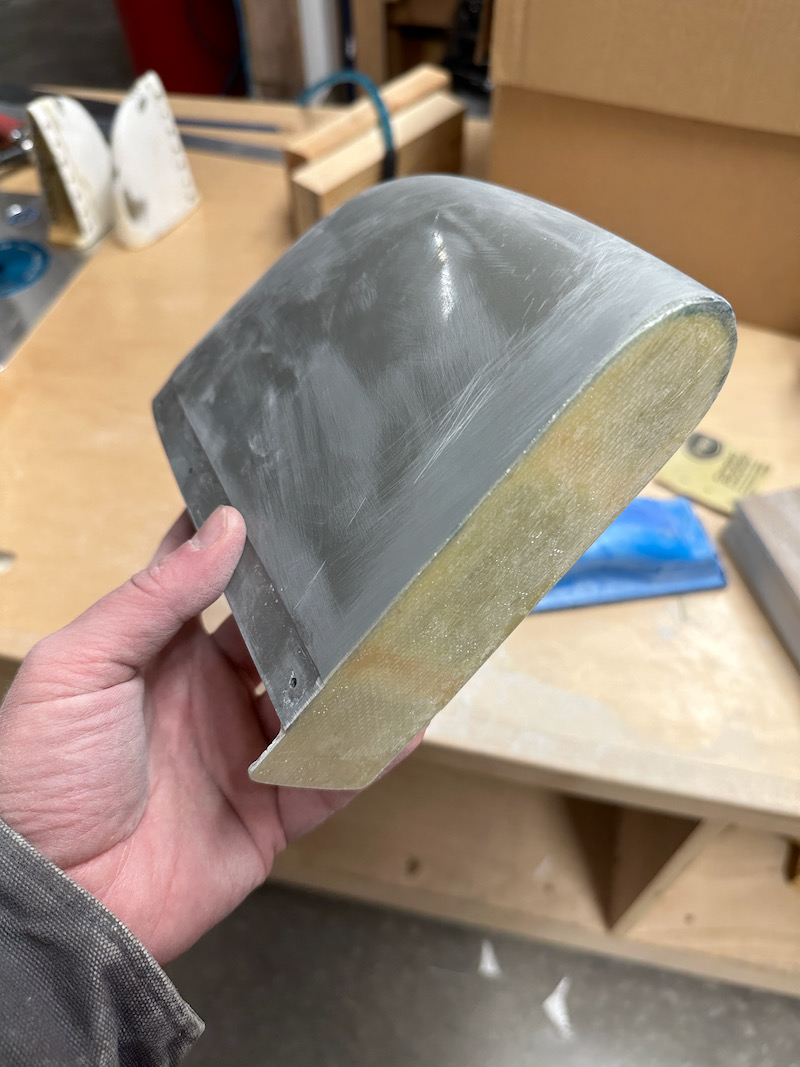
The little tongue at the bottom took a few iterations to sand to the right shape:
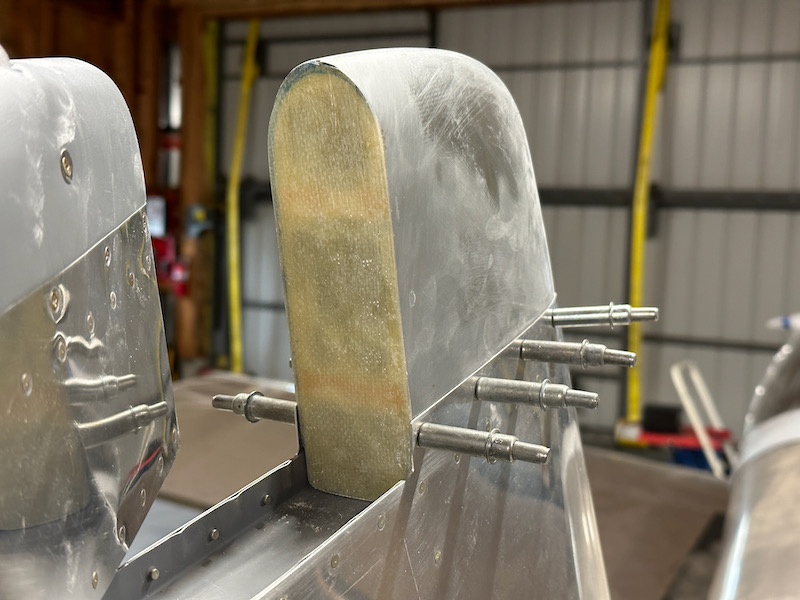
Making the fairing structurally complete is easy enough – the hard part is making it look nice. I protected the vertical stabilizer with tape, stuck in a piece of vinyl-covered aluminum as a divider, and slathered on the first application of micro filler:
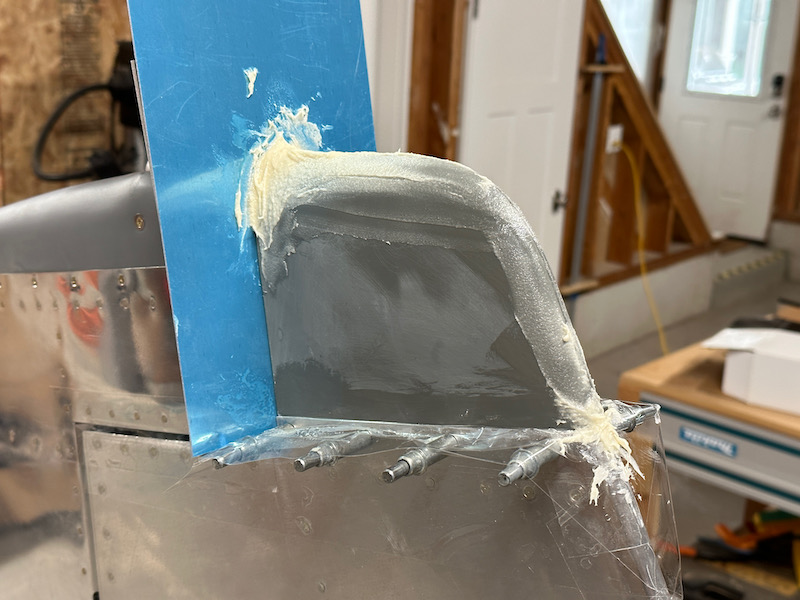
After sanding most of it off, the shape is starting to improve… note the built-up areas at the nose as well as on top:
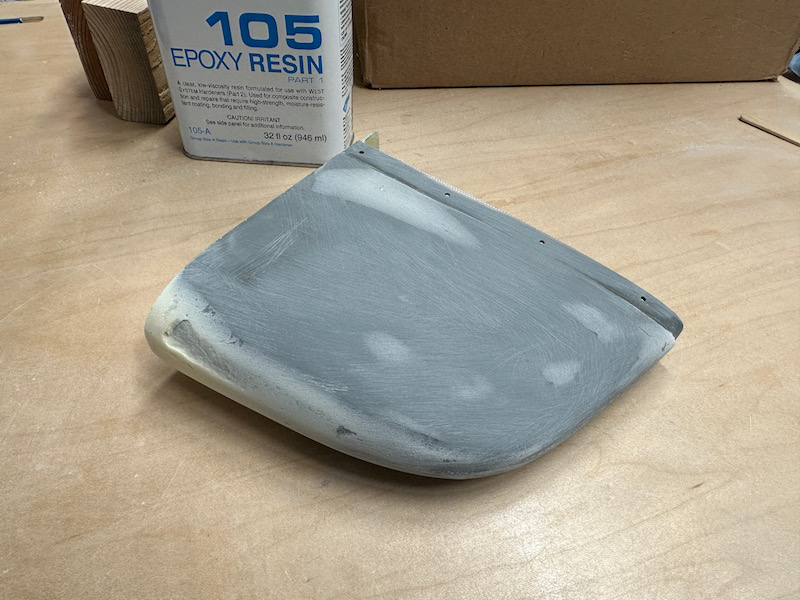
Another round to fill the low spots:
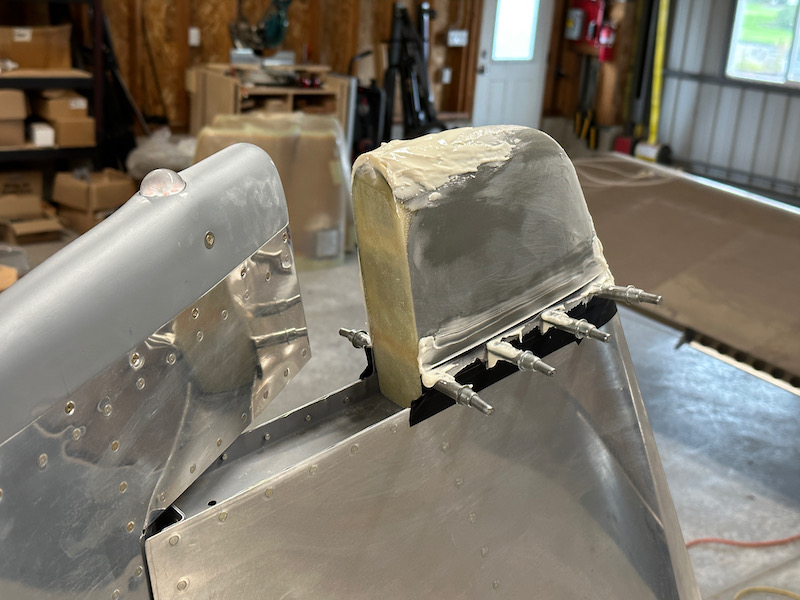
Sanding flush with the skin:
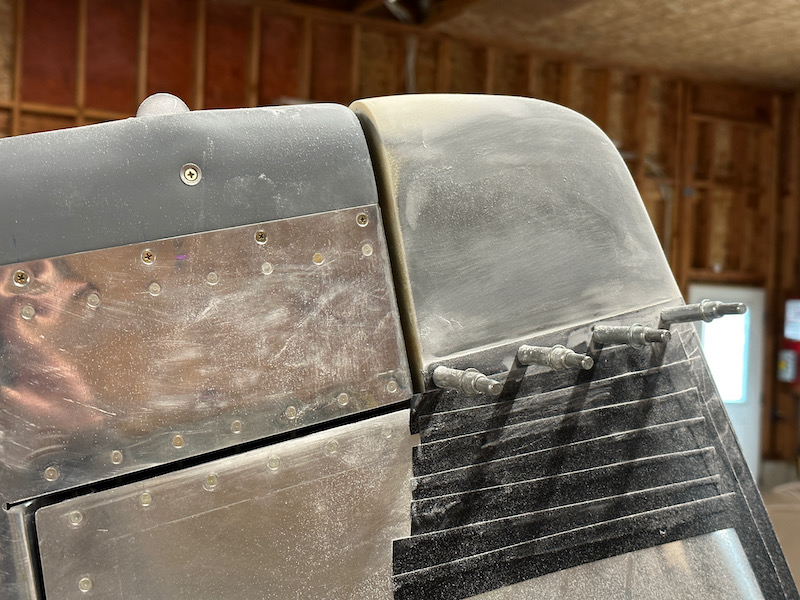
Here's the finished result, which looks terrible visually but is now the correct shape and smoothed to 320 grit:
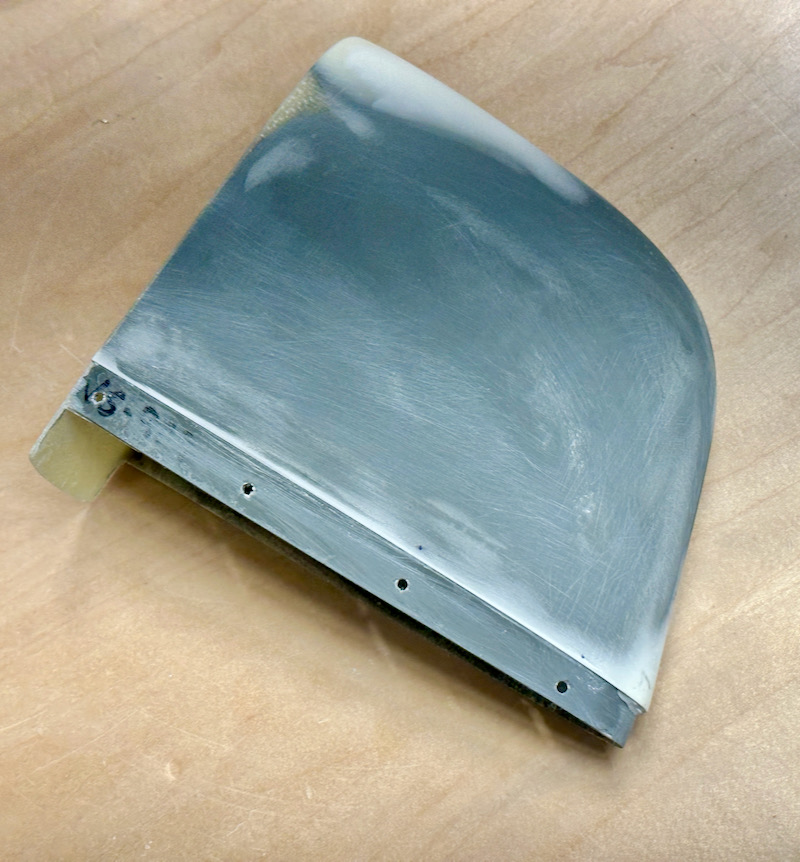
I did the usual thing with nutplates mounted on aluminum strips:
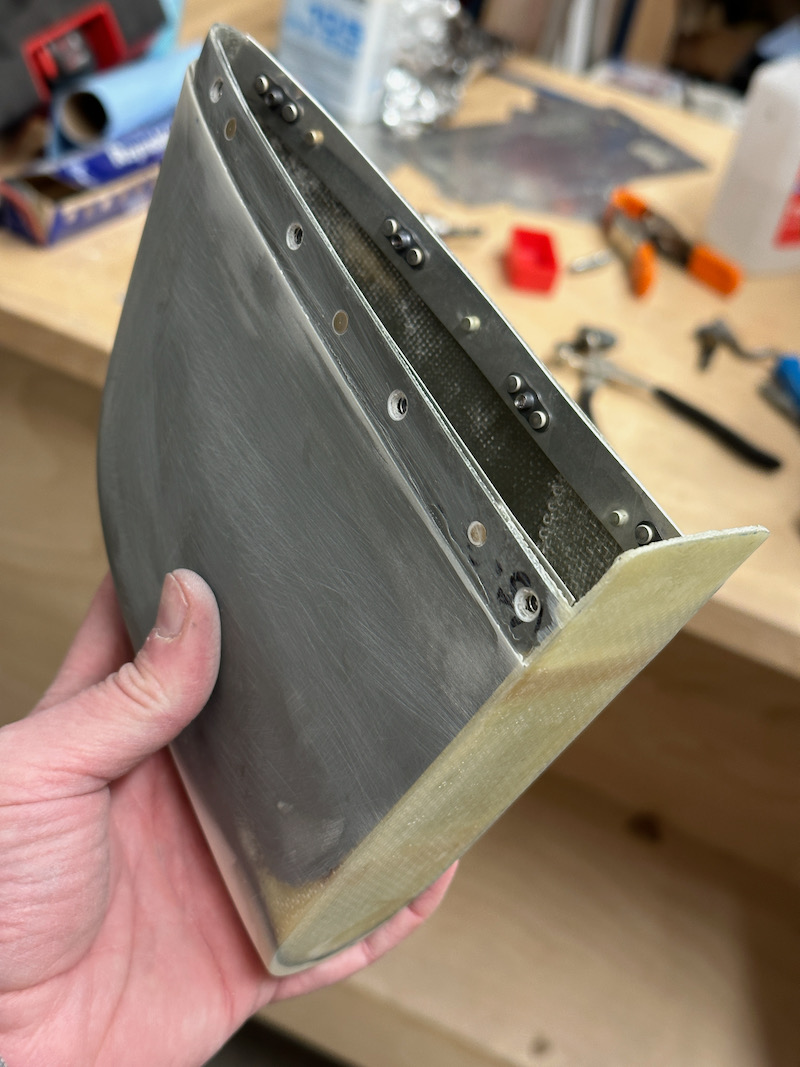
After a few coats of high-build primer, more sanding, and a final cosmetic coat of 7220, this is the finished result. Not perfect, but good enough for now. Eventually I'll have a pro painter take care of the last 10% and make it look really nice.
